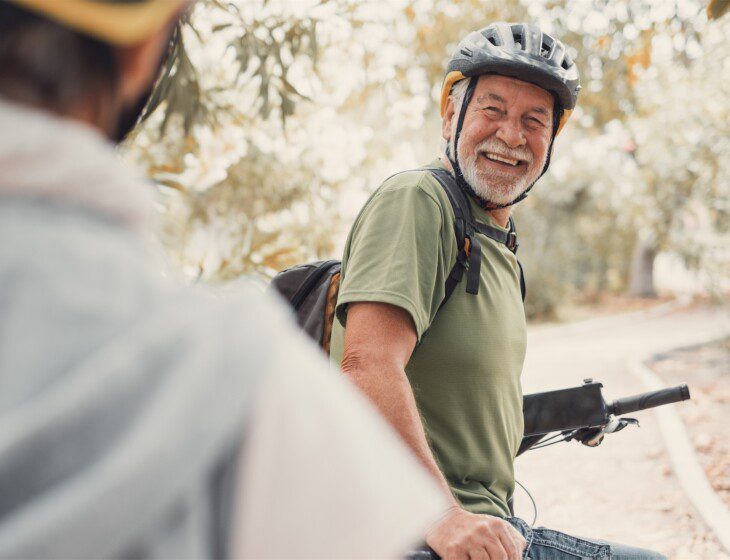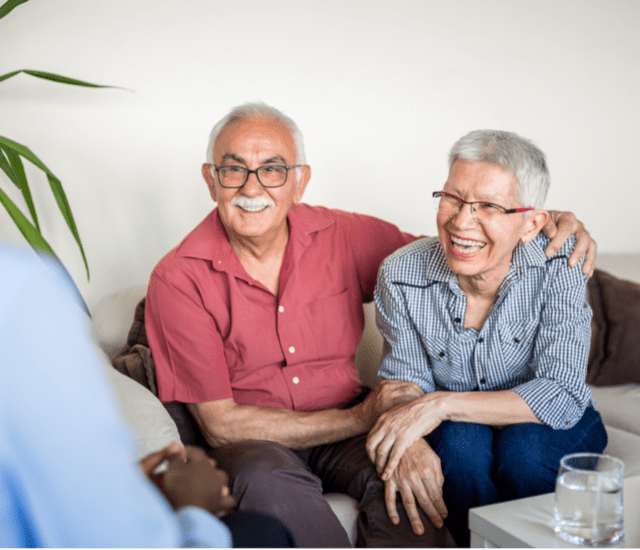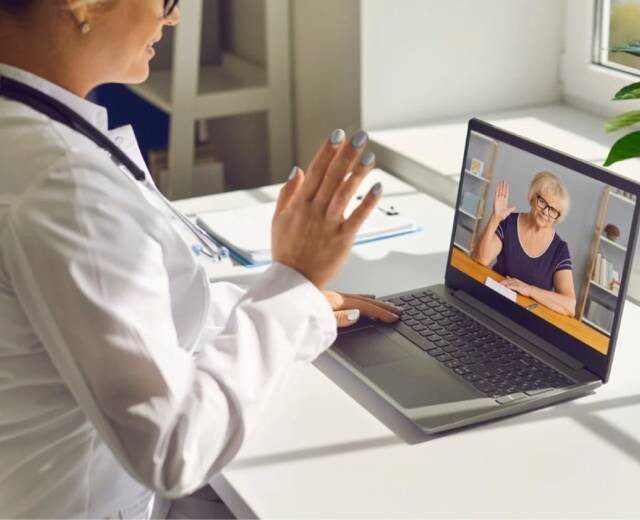You might think it goes without saying, but it deserves to be said anyway: Regular physical exercise for seniors is, hands down, one of the most important things you can do for your health.
The adage “use it or lose it” is especially true for older adults. If you don’t continually use the muscles and joints in your body, you can quickly lose strength and mobility.
If you’re already active on a consistent basis, you need no convincing — you’re well aware of the benefits of exercising. But if you’re not exactly a fixture at the fitness center, the good news is, it’s never too late to get moving.
Let’s talk about the physical and mental health benefits of daily exercise. Then let’s take a look at some exercises and activities for seniors you can easily work into daily life. After all, half the battle is acknowledging the importance of regular exercise; the other half is actually doing it.
Six physical health benefits of daily exercise
- It reduces your risk of disease. A healthy diet is essential, but it can only take you so far. Countless studies have shown frequent physical activity can help prevent common diseases like diabetes, hypertension and heart disease. It also helps significantly reduce your risk of certain types of cancer.
- It can improve your sleep. When your body is tired from exercise, you’ll sleep deeper and longer and wake up feeling more rested. Good sleep improves cognitive function and memory, too.
- It helps to alleviate pain. Exercising regularly relieves the pain and stiffness associated with arthritis. Exercise can also help you lose weight so you’re not putting as much pressure on your joints.
- It helps to relax muscles and relieve tension in your body. It also triggers the release of endorphins, chemicals in your brain that induce a sense of well-being.
- It prevents bone loss in both men and women. All older adults lose bone density as they age, though post-menopausal women lose up to 2% each year. Exercise, like strength training, can counteract bone loss and can actually restore bone density.
- It keeps your body strong and fit. Strength training exercises that focus on your core muscles can build stability, strength and flexibility. Maintaining core strength can prevent falls in older adults.
Six mental health benefits of daily exercise
- It lifts your overall mood. Scientists say your brain releases dopamine during exercise, a chemical often referred to as the “happy hormone.”
- It helps to preserve your cognitive function. Exercise has been linked to improved memory and thinking skills.
- It’s a deterrent against depression. Research has shown that exercise is an effective but often underused treatment for mild to moderate depression.
- It reduces feelings of anxiety and stress. Exercise has the power to reduce negative emotions by forcingthe body’s central and sympathetic nervous systems to communicate with one another, improving the body’s overall ability to respond to stress.
- It improves your self-esteem. When you complete a workout, you’re rewarded with a sense of having achieved something worthwhile. You feel proud of yourself for getting it done. If you keep it up, you feel yourself getting stronger and your stamina improving. All of this is in service of improving your self-esteem and self-worth, which are important components of mental health.
- It improves your memory. When you exercise, you’re preventing cognitive decline and memory loss because you’re strengthening the hippocampus, the part of the brain responsible for memory and learning.
If these 12 mental and physical benefits of regular exercise have convinced you to move even more, here’s your next move. Simply integrate these five great exercises for seniors into your daily routine.
- Start swimming. Some people say swimming is the perfect exercise. If you have arthritis, the buoyancy of the water supports your body, taking the strain off of painful joints. Even if you don’t want to swim, water aerobics, or jogging in water, is a good choice because the water offers resistance.
- Go for a walk. We’re not talking about a leisurely stroll to the mailbox. We mean a vigorous walk that gets your heart pumping. Work toward a goal of 10,00 steps a day, roughly equivalent to five miles.
- Take up strength training. You’re not trying to bulk up to become the next Arnold Schwarzenegger. You simply want to strengthen your muscles. So, start with just one or two pounds. You should be able to lift the weights 10 times with ease. After a couple of weeks, increase that by a pound or two. If you can easily lift the weights through the entire range of motion more than 12 times, move up to slightly heavier weights.
- Try yoga, Tai chi or Pilates. Keeping your muscles flexible should be one of your primary goals as you get older. These forms of exercise will engage your muscles while helping them to stretch.
- Get into stationary cycling. A stationary bike workout is as easy as riding a bike! A stationary bicycle puts less stress on your joints but still provides an excellent aerobic workout. It’s also an effective way to burn calories and body fat while strengthening your heart, lungs and muscles.
Three final things you may want to consider: access, instruction and motivation. Perhaps you don’t have access to a swimming pool. Maybe you just don’t feel quite confident enough to lift weights or start a yoga class all on your own. Or it could be that you’d enjoy exercising with friends.
Of these three things, motivation is the most important. If you’re hoping to start exercising, or want to increase your physical activity level, think about what motivates you. Ask friends to work out with you. Find a physical activity you love doing; it feels less like exercise when you enjoy doing it. Reward yourself when you reach a physical goal you’ve set for yourself.
Most of all, enjoy yourself. Exercise is important, but so is finding fun as you do it.
______________________________________________________________
An active retirement community like The Waterford in Juno Beach, FL, might be the perfect solution to access, instruction and motivation. High-quality retirement communities offer state-of-the-art fitness centers with expert instructors, along with residents who are just as interested in staying physically and mentally healthy as you are.
If you’re eager to find out how living at The Waterford could improve your physical and mental health, here’s your first workout (and it’s an easy one): Pick up your phone and call us at (561) 627-3800. Or even better: Contact ustoday, and we’ll be happy to set up your walking tour of our Juno Beach campus.


